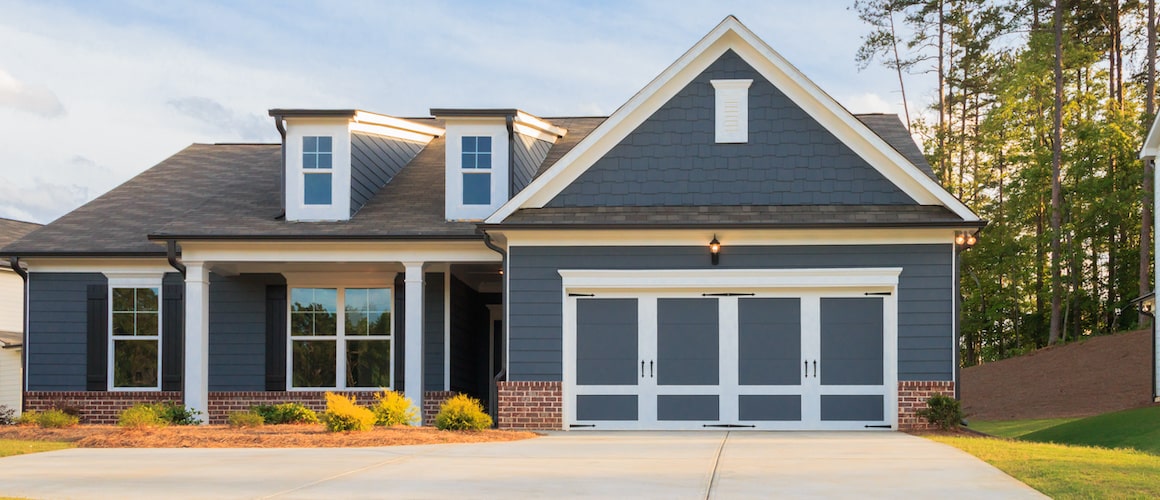Housing Market Undergoes Dramatic Shift as Sellers Hesitate Amid Emerging Buyer Advantages
The American real estate landscape is experiencing a fundamental transformation that's reshaping how homes change hands across the nation. Recent data reveals the U.S. housing market now has nearly 500,000 more sellers than buyers—the most on record, creating unprecedented conditions that are forcing both buyers and sellers to recalibrate their strategies.
This market reversal represents a stark departure from the seller-dominated environment of recent years, where bidding wars and cash offers were commonplace. Now, with mounting economic pressures and record-high housing costs, prospective sellers are increasingly choosing to wait on the sidelines rather than enter an increasingly competitive marketplace.
The Great Retreat: Why Homeowners Are Postponing Sales
The momentum behind new home listings has noticeably slowed, with fresh inventory climbing just 6.3% year-over-year during the four weeks ending June 1—marking one of the most modest increases in the past quarter. This tepid growth masks a more concerning trend: eleven of America's fifty largest metropolitan areas actually witnessed declining new listings, with technology hubs and vacation destinations bearing the brunt of this retreat.
Silicon Valley's San Jose leads this downturn with a striking 9% decrease in new listings, while Florida's real estate markets are experiencing widespread pullbacks. Orlando saw listings drop 8.3%, Fort Lauderdale declined 6.8%, Tampa fell 6.8%, and West Palm Beach retreated 5.5%. These markets, once red-hot destinations for both investors and relocating families, now reflect broader uncertainty about property values and market timing.
The seasonal pattern amplifies these concerns. While spring typically sees listing activity peak in mid-May before gradually declining, this year's drop represents the steepest decline for this timeframe in a full decade. This suggests that many homeowners who might traditionally capitalize on spring buying activity are instead choosing to hold onto their properties.
Economic Headwinds Create Perfect Storm for Market Hesitation
Multiple economic factors are converging to create an environment where selling a home has become increasingly challenging. The median home sale price has reached $393,750, representing a 1.2% annual increase that, while modest by recent standards, still places homeownership beyond the reach of many American families. More concerning for sellers is that asking prices have surged 4.9% to a median of $425,975, creating a growing gap between seller expectations and buyer capabilities.
Mortgage rates approaching 7% and economic uncertainty are significantly impacting homebuying activity, with the weekly average mortgage rate hitting 6.89%—its highest level since February. This rate environment translates to a median monthly mortgage payment of $2,863, just $20 shy of record highs and representing a 4% annual increase that's outpacing wage growth in most regions.
The ripple effects are evident in buyer behavior. Pending home sales have declined 0.4% year-over-year to their lowest May levels since 2020, while mortgage purchase applications fell 3% week-over-week. These metrics paint a picture of prospective buyers who are increasingly priced out or choosing to delay major purchases amid economic uncertainty.
Market Dynamics Favor Buyers for First Time in Years
The balance of power in real estate transactions has shifted decisively toward buyers, creating conditions not seen since the early 2020s. Homes now typically sell for about 1% below their asking price—the largest discount for this time of year since 2020. Additionally, only 28% of homes are selling above their listing price, down from 32% at the same time last year.
These pricing dynamics reflect a market where sellers can no longer dictate terms. The average sale-to-list price ratio has dropped to 99.1% from 99.5% the previous year, indicating that negotiation has returned to real estate transactions. Properties are spending longer on the market too, with the median days on market extending to 36 days—four days longer than the previous year.
Market conditions are transitioning from a seller's market to a more balanced one, with increased inventory, more price reductions, longer time on the market and lower listing prices, creating opportunities for motivated buyers who can navigate the current financing environment.
Regional Variations Tell Different Stories
While national trends show a cooling market, regional differences remain stark and telling. Philadelphia leads price appreciation with an impressive 11.4% annual increase, followed by Detroit at 10.6%, Pittsburgh at 7.4%, Miami at 7.1%, and New Brunswick, New Jersey at 6.9%. These markets reflect continued strength in areas with strong employment bases or attractive cost-of-living ratios.
Conversely, several major markets are experiencing price declines that would have been unthinkable just two years ago. Oakland, California leads this downturn with an 8.5% price decrease, while Dallas has fallen 4.5%, Jacksonville dropped 3.6%, Houston declined 2.4%, and Austin retreated 1.6%. These declines span nine metropolitan areas, suggesting that high-priced markets are particularly vulnerable to the current economic environment.
Pending sales data reveals even more dramatic regional variations. Cincinnati leads growth with a 10.9% increase in pending sales, while Chicago grew 6.5%, Boston expanded 5.7%, Montgomery County, Pennsylvania increased 4.7%, and Indianapolis rose 4.2%. Meanwhile, Miami experienced a devastating 19.6% decline in pending sales, San Jose fell 16.2%, Fort Lauderdale dropped 15.9%, Las Vegas declined 15.4%, and San Diego retreated 12.2%.
Strategic Adaptations for Success in Changing Market
Sellers must be flexible going into 2025, as buyers will start to have the upper hand, with more buyers demanding price cuts or concessions toward rate buy-downs. Real estate professionals are adapting their strategies to help clients navigate this new reality.
Ben Ambroch, a Redfin Premier agent in Milwaukee, offers practical guidance: "If a home is in a desirable neighborhood, especially if it's fixed up, it will sell fairly quickly. But even that type of home now gets two or three offers, as opposed to the 10 offers it would have gotten a few years ago. Sellers of homes that need work in fringe neighborhoods should be able to find a buyer, but it's important they come to the table with realistic expectations on price and timing, and a willingness to negotiate."
This advice reflects the new market reality where seller preparation and realistic pricing have become crucial for success. Properties in prime locations with recent updates continue to attract multiple offers, but the days of bidding wars are largely over. For properties requiring work or in less desirable areas, sellers must be prepared for extended marketing periods and potential concessions.
Future Outlook and Market Evolution
Real estate experts predict that home prices will drop 1% year over year by the end of 2025, based on the growing imbalance between buyers and sellers. This forecast represents a significant shift from the double-digit appreciation rates of recent years and suggests that the market is entering a period of price stabilization or modest decline.
Housing inventory is expected to improve between 2025 and 2029, though not returning to pre-pandemic levels. High financing costs are likely to lead to slower home sales and longer days on the market, which could further discourage sellers and create a self-reinforcing cycle of reduced activity.
The current market environment presents both challenges and opportunities. For sellers, success requires realistic pricing, strategic preparation, and flexibility in negotiations. For buyers, patience and financial preparation can lead to opportunities that haven't existed in years.
Key Market Insights
What's driving the seller retreat in 2025?
The combination of near-record mortgage rates approaching 7%, economic uncertainty, and a growing gap between asking prices and buyer capabilities is causing many potential sellers to postpone their plans. Additionally, the shift from a seller's market to buyer-friendly conditions means sellers must work harder and potentially accept lower prices.
How are current market conditions different from previous years?
Unlike the seller-dominated market of 2021-2023, where homes routinely sold above asking price with multiple offers, today's market features homes selling at 1% below asking price on average, longer days on market (36 days vs. 32 days previously), and only 28% of homes selling above list price compared to 32% last year.
Which regions are most affected by the market shift?
Technology-heavy markets like San Jose (-9% new listings) and Florida vacation/retirement destinations including Orlando (-8.3%), Fort Lauderdale (-6.8%), and Tampa (-6.8%) are experiencing the most significant pullbacks in seller activity.
What strategies work best for sellers in this market?
Successful sellers are focusing on realistic pricing based on recent comparable sales, ensuring homes are move-in ready condition, being prepared for longer marketing periods, and remaining flexible on terms and concessions during negotiations.
Is this a good time for buyers to enter the market?
Current conditions favor buyers more than any time since 2020, with increased inventory, price reductions becoming common, and sellers more willing to negotiate on terms and closing costs.
What does the data suggest about future price trends?
With 500,000 more sellers than buyers nationally and mounting economic pressures, experts predict modest price declines of around 1% by the end of 2025, marking a significant shift from the appreciation-heavy markets of recent years.












